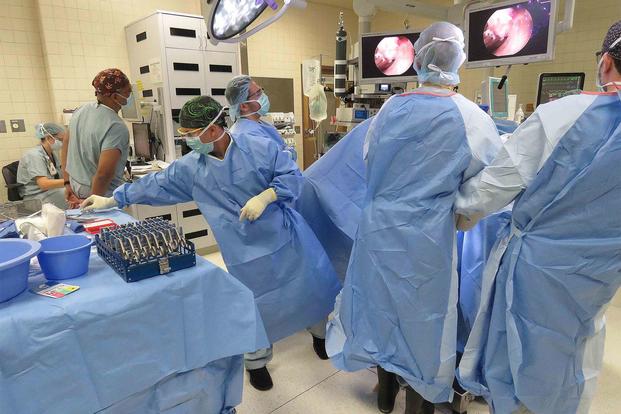Patients should expect to be admitted faster and receive better access to specialized care at Joint Base Lewis-McChord's medical center as it adopts a streamlined patient admittance policy, according to an Army news release.
The Washington base hospital's patient flow, or how patients are moved from one point of care to another, is changing as management of the military services' medical facilities is transferred to the Defense Health Agency to improve efficiency.
The changes at Madigan Army Medical Center, which began Monday, eliminate multiple avenues for admitting patients, allowing providers to call nurses directly and assigning patients to nurses with an expertise in delivering the appropriate level of care.
"The nursing staff should see smoother (patient) flow, fewer transitions of care, more lateral support, better communication and a more standardized approach at every admit and discharge," Mark Sanders, nurse methods analyst, said in the Jan. 2 release.
Related: Military Patients Will 'Absolutely Positively' See Better Care After Merger, DHA Head Says
Placing patients in the right spot sooner will reduce the number of transfers and care transitions that can cause vital information about a patient's condition and needs to be lost, he said.
Ideally, after a review of the patient's needed care, it will take no more than 15 minutes to assign an inpatient bed. The patient should be physically in that bed within 60 minutes.
Lt. Col. Sherie Johnson, a nursing supervisor responsible for admitting, said having providers call her team directly to secure a bed keeps them from spending time tracking down the patient's condition on a chart.
The next change will be building a logistics center, which will have monitors for staff to see bed and staffing availability for the busiest units and show patient flow from entry into care through discharge. Construction is expected to begin Feb. 11.
Sanders added that streamlining the patient flow process will let staff use the full potential of the new electronic health records system, MHS Genesis, helping them predict staffing needs across the hospital.
"If the nursing staff knows we're going to give them the right patient in the right bed at the right time with the right amount of staff to support the work that's being created," Sanders said, "then they don't have to worry about [efficiency and safety]."
-- Dorothy Mills-Gregg can be reached at dorothy.mills-gregg@military.com. Follow her on Twitter at @DMillsGregg.
Read more: A Lance Corporal's Phone Selfie Got His Marine Unit 'Killed' at 29 Palms













